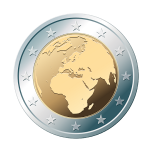Get Your Money Right
How to save up, understand exchange rates, and hopefully avoid getting ripped off.
Travel rewards cards. Saving isn't the easiest thing to do, especially since there are so many distractions along the way to your goal. It's hard to save up for the airfare for a trip to Tokyo if you always have to have the latest anime figurine or video game. But there are tools to help. Travel rewards credit cards are a great way to earn money off your flight ticket while making purchases. But there are so many, and the fine print is so confusing, so which one to get?

Fortunately, analysts with Kiplinger sort through all of that and rate everything from colleges to credit cards, and then some. Follow this link to find their top recommendations for travel rewards cards that will help you get to Japan.
I have the US Bank card listed in the Kiplinger report. After less than a year of use, it saved me $360 on my flight to Japan. The only downside to this card is that it requires you to use Travelocity to get the full rewards value. As I detailed on this page, Travelocity is not my favorite service for booking flights. So I opted for the cash rewards in order to use another service (Kayak) to get the flight I wanted. But the price savings in going with that other service made up the difference from losing some of the rewards points. As always, do your homework and see which card will work best for you.
Currency converters and apps
The easiest way to track exchange rates will probably be to take your currency and see how many Yen it will buy. The more yen you can buy with your currency, the more souvenirs you can bring home for friends and family. For example, during my 2012 trip, 1 U.S. Dollar only bought 78 Japanese Yen. I went anyway. But many Americans did not, because the poor exchange rate made Japan too expensive. Following the implementation of "Abenomics" in Japan and the suspension of quantitative easing policies in the U.S., the exchange rate has been fluctuating between US$1 = 106 JPY and US$1 = 124JPY. The result? Tourism has increased, and foreign investment in Japan is picking up. And I keep going back.
Currency apps. As with everything else, there are apps for tracking exchange rates for your smartphone.

Easy Currency Converter is just what it says: An easy-to-use exchange rate tracking app (for Android). I have mine set on US$ = JPY, and can check rates any time with just one tap to open the app.
|

Another popular app (for Android) is simply called Exchange Rates. It includes a calculator in case you need to convert a specific amount. Handy for online purchases or figuring out how much to ask the parents to wire you, so you can buy that long-sought-after manga .
|
Getting your currency exchanged. One of my local associates in the Japanese business community is a recruiter for the JET (Japanese English Teachers) program. His advice echoes my own when getting your currency exchanged on a trip: The best rates are at a Japanese bank. The worst are at Narita airport (or at any airport, as I found out on a trip to Toronto). American banks fall somewhere in between. But it is good to have some yen on you when you land at Narita, because you will have to take a bus, taxi, or train (take the train, trust me) to leave the station, and they take yen. So get 10,000-20,000JPY before you leave to get you through the first day in Japan, and take your native cash with you to exchange a day after you get settled in.
If you buy products from Japan online, be aware that PayPal makes extra money by exchanging at a lower rate. For example, if US$1 buys 106JPY that day, PayPal will exchange at or below 103JPY. It's always good to read the fine print!
If you buy products from Japan online, be aware that PayPal makes extra money by exchanging at a lower rate. For example, if US$1 buys 106JPY that day, PayPal will exchange at or below 103JPY. It's always good to read the fine print!
Copyright © 2014-2023 www.YouShouldVisitJapan.com
